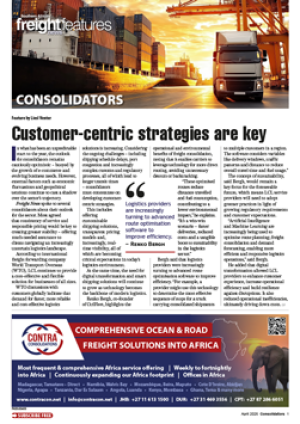Freight forwarders have welcomed the Ports Regulator of South Africa’s (PRSA) announcement of a zero increase in container cargo dues in its record of decision on the tariff application by the National Ports Authority on Friday – but ship operators and agents expressed concern at other rising port costs without a commensurate improvement in efficiency to reduce ongoing bottlenecks. PRSA CEO Mahesh Fakir said the NPA had applied for approval of an 8.45% average increase in the tariffs for services and facilities offered for the period 1 April 2018 to 31 March 2019, as well as indicative tariffs for the periods up to 31 March 2021. The tariff application is the first in terms of the second multi-year Tariff Methodology (MYM2) published in March 2017. “After considering the application, including the re-application received on 19 October 2017 that corrected calculation errors made by the NPA, as well as all the submissions by all stakeholders during the consultation period and based on latest available data, the ports regulator has concluded that an appropriate overall increase in tariffs for the financial year 2018/19 is 2.5%,” Fakir said. According to the regulator, marine services and related tariffs (Sections 1-8 of the Tariff Book, excluding Section 7 that deals with cargo dues) will increase by 8.5%; coal export cargo dues will increase by 8.5%; container cargo dues and roro tariffs will increase by 0%; all other cargo dues will increase by 5.4% and all breakbulk tariffs will be capped at R100 per ton. All marine tariffs (Section 1-8 of the Tariff Book, excluding Section 6 and 7 that deal with ship repair and cargo dues) for existing commercial SA flagged cargo vessels as well as those registered in SA in 2016/17 will receive a 30% discount per annum until 31 March 2019. Ships registered in SA in 2017/18 will receive a 20% discount and those registered in 2018/19 get a 10% discount. However, all small, fishing and non-cargo working vessels are excluded from the discounts. Fakir said the regulator had considered marketrelated factors – including cargo volumes, the inflation outlook, the cost of debt and the operational and cash flow requirements of the NPA – in making its decision. The implementation of the published Tariff Strategy which aims to rebalance the tariff structure to more closely reflect the underlying cost and benefit to specific port users had also been considered, he said. The regulator was confident that the decision reflected a “balanced and sustainable average negative real tariff change” that would result in a 6.3% yearon-year increase in allowed revenue, ensuring a lower than inflation increase or real decrease in most tariffs except for coal and marine services. “The NPA will be allowed to recover R12.414 billion versus the R12.665 billion applied for, comprising 98% of applied for revenue, ensuring their sustainability and also providing the financial space to ensure that the capital programme included in the application, totalling R3.053 billion is fully implemented,” Fakir said. The regulator’s indicative tariff for 2019/20 and 2020/21 was 6% average or lower for each year. He added that the regulator was committed to reducing the cost of doing business and that a performancebased incentive for the NPA, called WEGO (weighted efficiency gain on operations) would be included in the tariff determination process that would see KPIs measured in the 2018/19 tariff year. The regulator has also held R345 million in reserve to ensure overall average tariff increases remain close to the SA Reserve Bank’s target band in 2018/19 and 2020/21. Dave Watts, marine consultant to the SA Association of Freight Forwarders. said the 2.5% average increase and 0% increase on cargo dues was “good news”. “Generally our customers will be thrilled,” he said. Malte Kersten, SA Association of Ship Operators and Agents chairman, said he was concerned that steadily rising port tariffs without any real improvement in efficiencies at the Port of Durban and Richards Bay could lead to fewer ships calling at the ports as shipping lines could not simply pass on increases to clients because of highly competitive, globally determined freight rates. Delays to enter the ports and receive services were as long as a week and around 30 coal liners were queuing outside Richards Bay Port awaiting entrance on Friday morning alone, Kersten said. SA Association of Ship Operators and Agents CEO Peter Besnard said he was concerned that the zero increase on container cargo dues might impact port maintenance. TNPA chief executive Shulami Qalinge said the authority would need to examine the record of decision before commenting in detail. “We do appreciate the 98% we have been given in terms of the revenue allowed and also the R345 million that is put in reserve for us even although it will affect cash flows. The 2.5% average increase is something we need to go back and think about thoroughly because it has its own financial implication,” Qalinge said.
INSERT
Rising port tariffs without improved efficiency could lead to fewer ships calling at our ports. – Malte Kersten
IMAGE
.PNG)

